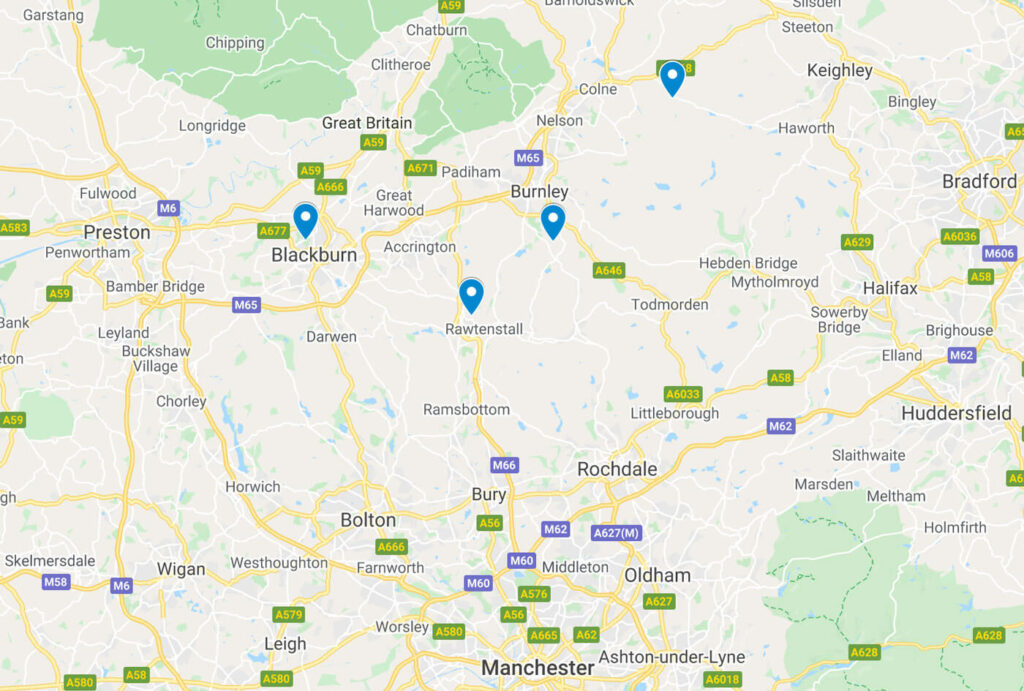The East Lancashire Panopticons are four art installations set in the stunning scenery of Pennine Lancashire, just north of Manchester.
In this post you’ll find out why the Lancashire Panopticons are worth a trip, how to get there and how to get the most out of your visit to these fabulous landmarks.
East Lancashire Panopticons map
The Lancashire Panopticons are all set either in or above towns in East Lancashire, north of Manchester. It’s 22 miles from the furthest east Panopticon, Atom, to the furthest west Panopticon, Colourfields.
The map below shows where you can find the Lancashire Panopticons. Click to see an interactive map.
Why were the Lancashire Panopticons built?
The Lancashire Panopticons were opened between June 2006 and September 2007 and were part of an arts and regeneration project, managed by Mid Pennine Arts. A fifth Panopticon, intended for the hills above Accrington, never came to fruition.
The word Panopticon means a structure providing a comprehensive view. Together, the four Panopticons symbolise the renaissance of the East Lancashire area and make a great day trip from Manchester.
The Singing Ringing Tree Panopticon, Burnley
Burnley’s Panopticon is called the Singing Ringing Tree, and as its name suggests, it’s a musical installation. The Singing Ringing Tree is made of galvanised steel pipes facing in different directions, and when the wind blows, it makes a haunting, organ-like sound. The Singing Ringing Tree’s position on a hilltop just south of Burnley means there’s plenty of wind to make it sing!
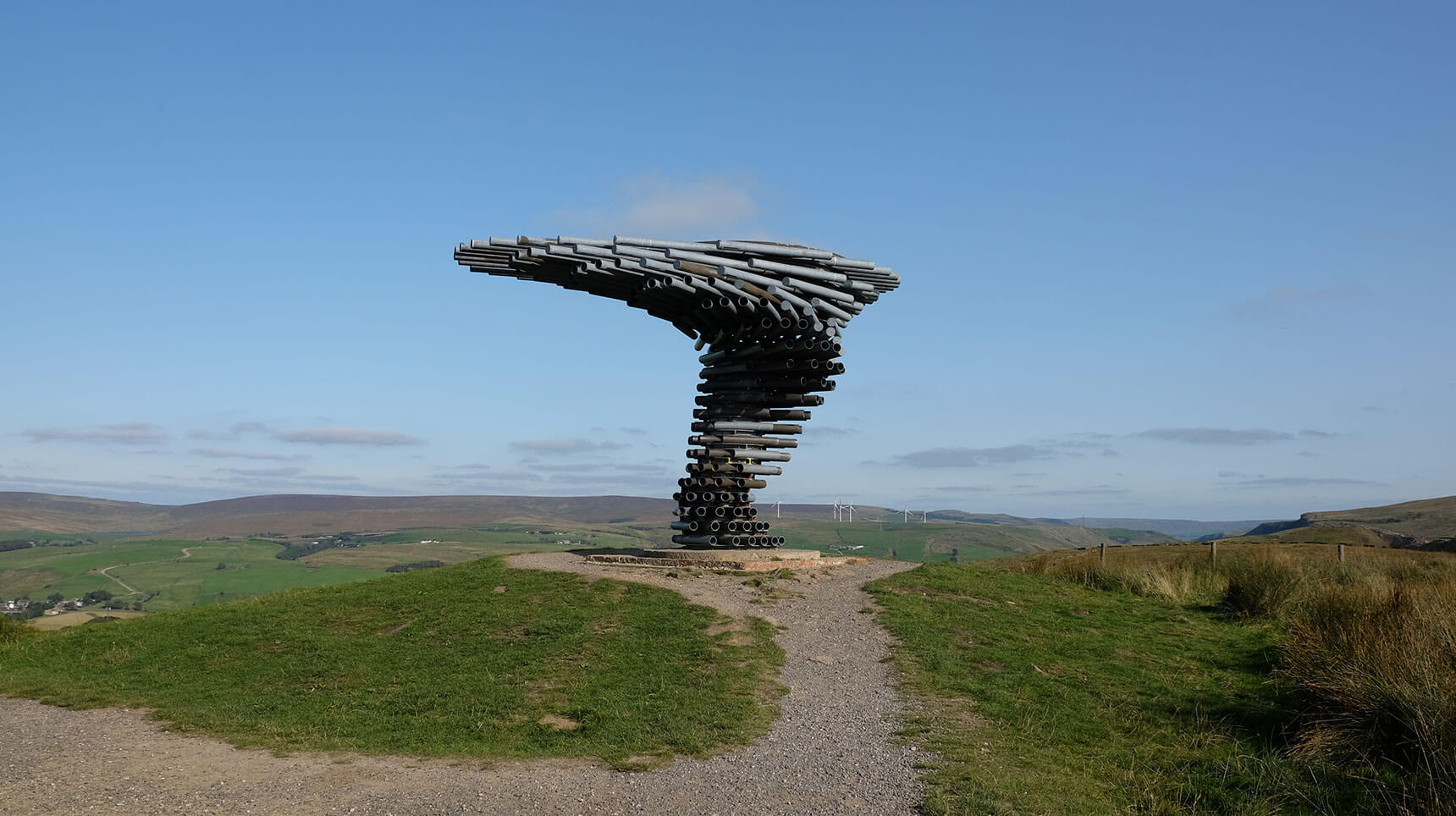
The structure looks like a cross between a tree and a twisted set of pan pipes; some of the pipes are purely decorative but many of them have been tuned by being cut into varying lengths and having holes drilled into them.
The Singing Ringing Tree has amazing views across Burnley and the surrounding moorland and fields towards Pendle Hill. To get the most out of your visit to Burnley’s Panopticon, try to visit on a bright but breezy day to maximise how far you can see and how much the Singing Ringing Tree sings for you.
The Singing Ringing Tree was designed by architects Mike Tonkin and Anna Liu, and was opened on 14 December 2006 – the second of the Lancashire Panopticons to be launched. It won the National Award of the Royal Institute of British Architects (RIBA) in 2007. There’s another Singing Ringing Tree just outside Austin, Texas.
How to get to the Singing Ringing Tree Panopticon
The Singing Ringing Tree is just off Crown Point Road, south of Burnley. There’s a small car park at the side of the road; from the car park it’s around 1/4 mile to the Panopticon along a gravel path. The path is mostly straight and level but there’s a short hill at the start of the walk.
If you’re using public transport, you can take the number 8 Rossendale Rover bus towards Bacup or 483 Irwell Line bus towards Bury. From the bus stop at Burnley’s landfill site, it’s a 1.3 mile or 30 minute walk to the Singing Ringing Tree.
Other attractions near the Singing Ringing Tree Panopticon
If you’re visiting Burnley to see the Singing Ringing Tree, it’s well worth taking the time to visit Towneley Hall. Set in Burnley’s largest and most popular park, Towneley Hall has a museum with lots of quirky exhibits, an art gallery, gardens and activities for children.
Burnley also has attractions that celebrate the town’s textile weaving history. Queen Street Mill Textile Museum gives visitors the chance to take a guided tour of the world’s only working steam-powered weaving mill. The Weavers’ Triangle is in a historic part of Burnley, next to the Leeds-Liverpool canal. You can see a Victorian schoolroom, Edwardian bathroom and weaver’s dwelling at the Weavers’ Triangle visitor centre. Visitor centre staff also look after the (formerly steam, now electric) mill engine at Oak Mount Mill; you can see it running on occasional weekends.
The Leeds-Liverpool canal crosses Burnley town centre on the mile-long, 18 metre-high Burnley Embankment, known locally as the “Straight Mile”. Built between 1796 and 1801 at enormous expense to avoid the need for locks at either end of the town and speed up coal and textile traffic, the Burnley Embankment is widely regarded as one of the “seven wonders” of the British canal system.
The Atom Panopticon, Wycoller
The Atom is my favourite of the Lancashire Panopticons. Set in beautiful countryside on the very edge of East Lancashire, the contrast between the rural views and the other-worldly Atom is breathtaking.
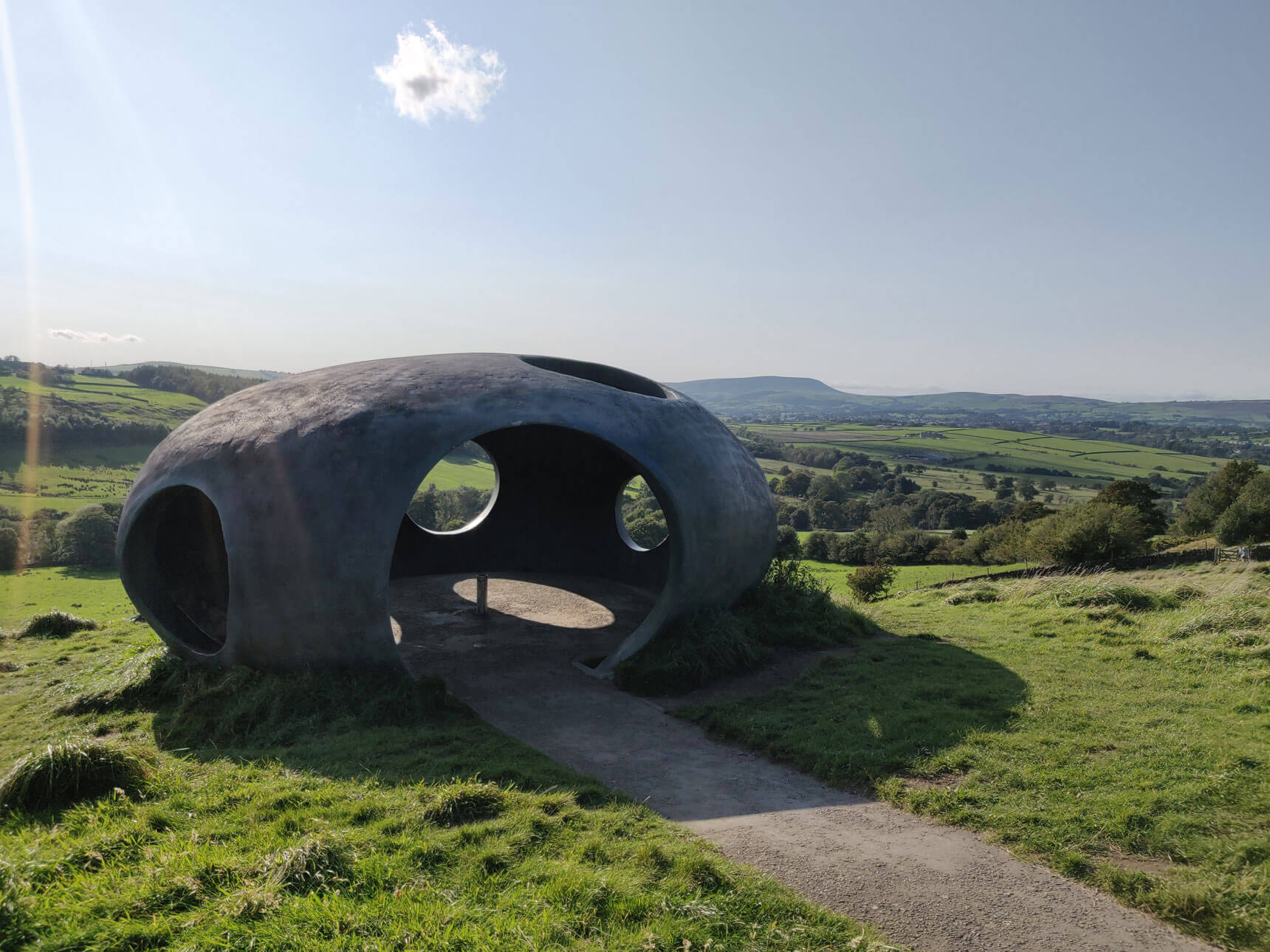
The Atom was designed by Peter Meacock Projects with Katarina Novomestska, and opened on 22 September 2006. The structure is made of concrete with glass fibre reinforcement, and is coated with bronze. It looks like a cross between a giant egg and a UFO, with large oval windows which frame the views of the surrounding landscape beautifully. The Atom originally had a polished steel ball in its centre which reflected the views, but this was repeatedly vandalised and has been removed.
How to get to the Atom Panopticon
The easiest way to get to the Atom Panopticon is by car. From Colne, head towards Laneshawbridge and take Lancashire Moor Road towards Haworth. There’s a large car park just off Lancashire Moor Road, a very short walk from the Atom.
If you’re using public transport to visit the Atom and Wycoller, buses run approximately every half hour during the day between Colne and Keighley, stopping at Laneshawbridge. From Laneshawbridge to the Atom Panopticon is just under 1.5 miles through; you could visit Wycoller on the way to make it a circular walk.
Other attractions near the Atom Panopticon
The Atom is just up the hill from Wycoller, a wonderful place to visit in its own right. Wycoller is a pretty hamlet of old sandstone cottages with a stream running through it and the ruins of Wycoller Hall which is believed to have inspired Charlotte Brontë (it’s believed to be the original Ferndean Manor from Charlotte Brontë’s novel Jane Eyre). The village is surrounded by Wycoller Country Park, which has lots of lovely walks for all the family. A trail of fairy houses and open spaces to run around make Wycoller a great place for families.
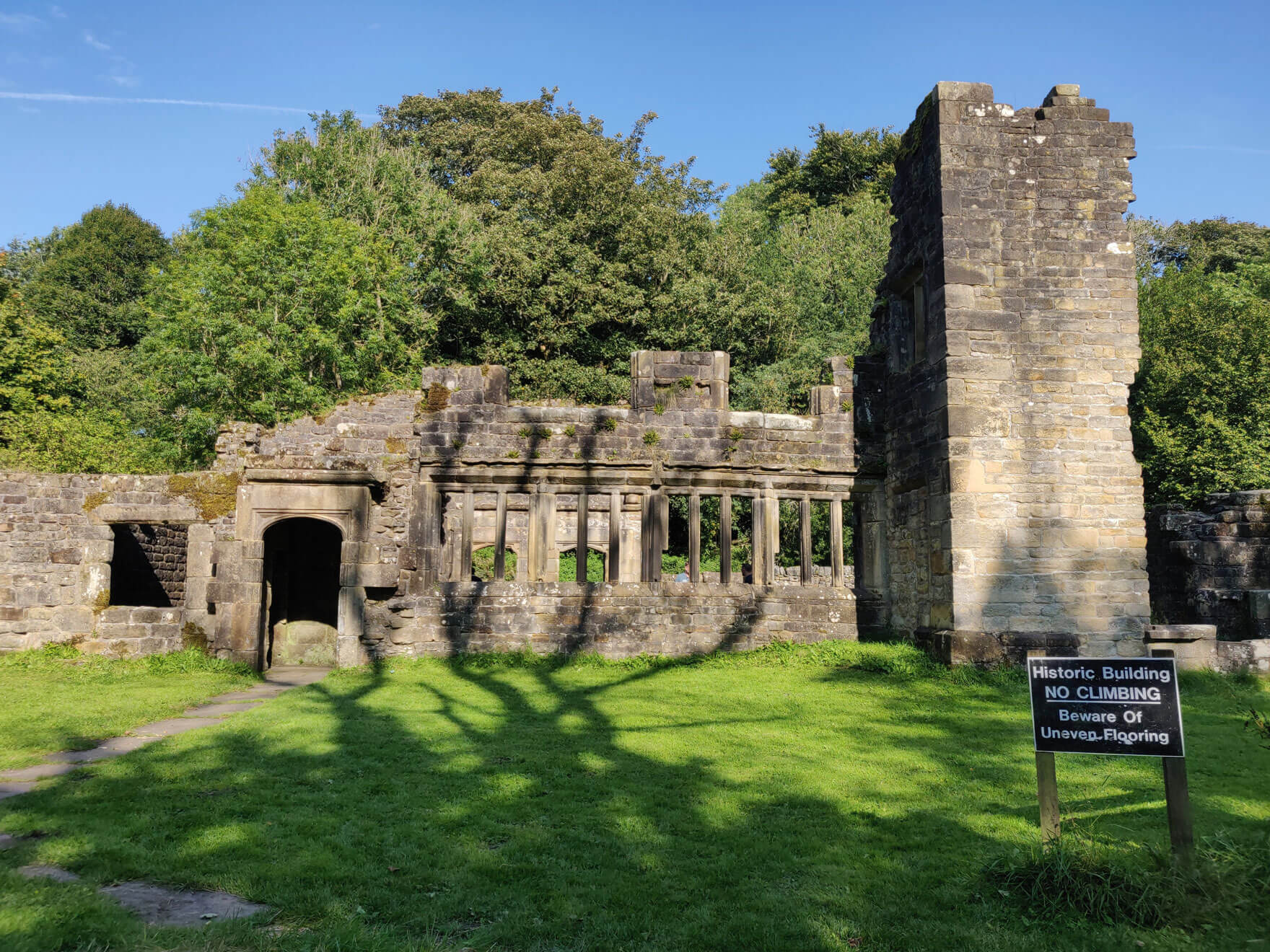
If you’re interested in the Brontë sisters then you must visit Haworth, just 6.5 miles over the moors from the Atom Panopticon. Haworth has several attractions, including the Brontë Parsonage Museum, the Keighley and Worth Valley heritage railway and the picturesque Main Street which is full of cafés and book shops.
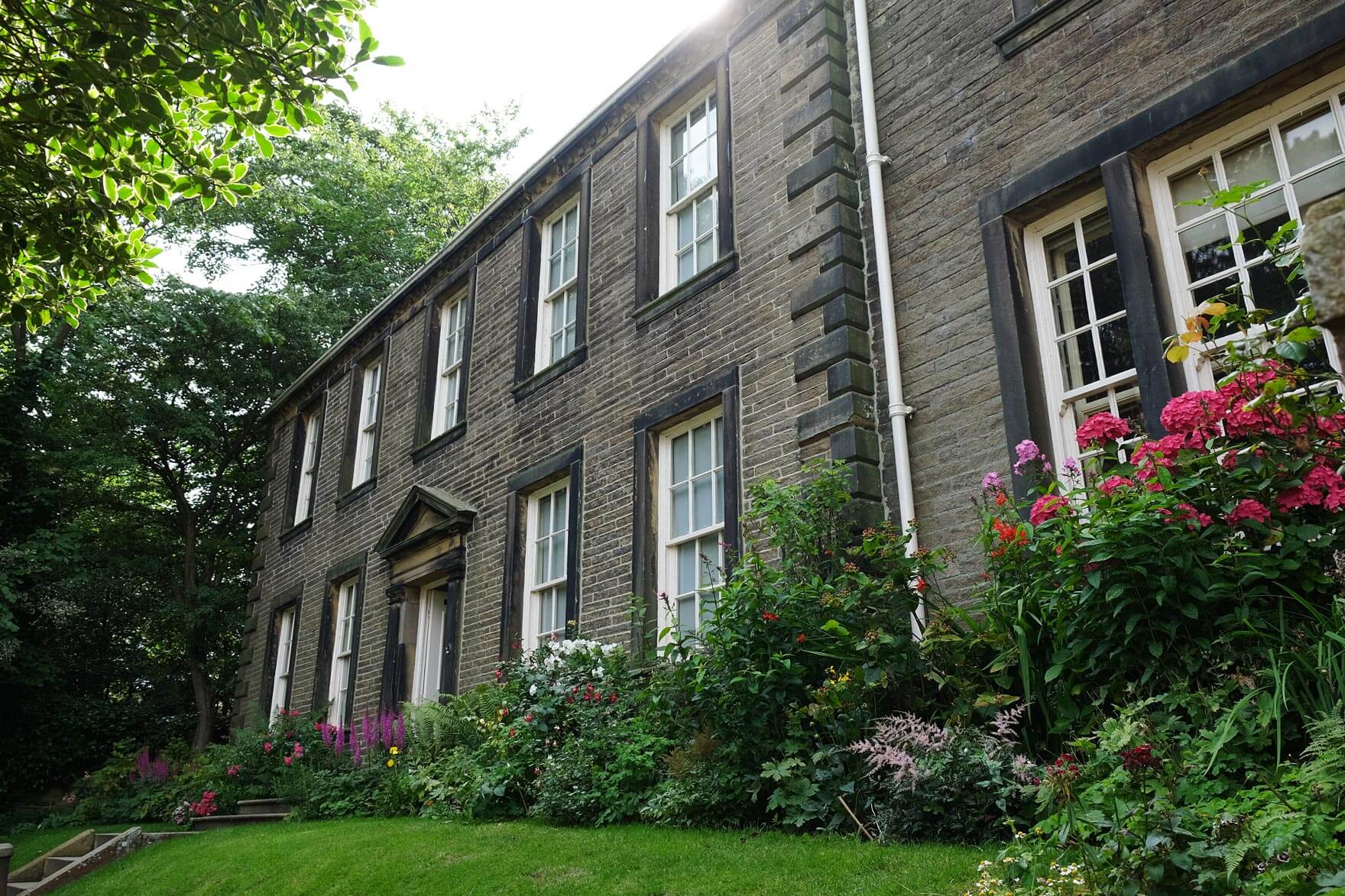
Colourfields Panopticon, Blackburn
The Colourfields Panopticon in Blackburn is the most urban of all the East Lancashire Panopticons. You’ll find it in Corporation Park, just to the north of Blackburn town centre, close to the park entrances on Revidge Road.
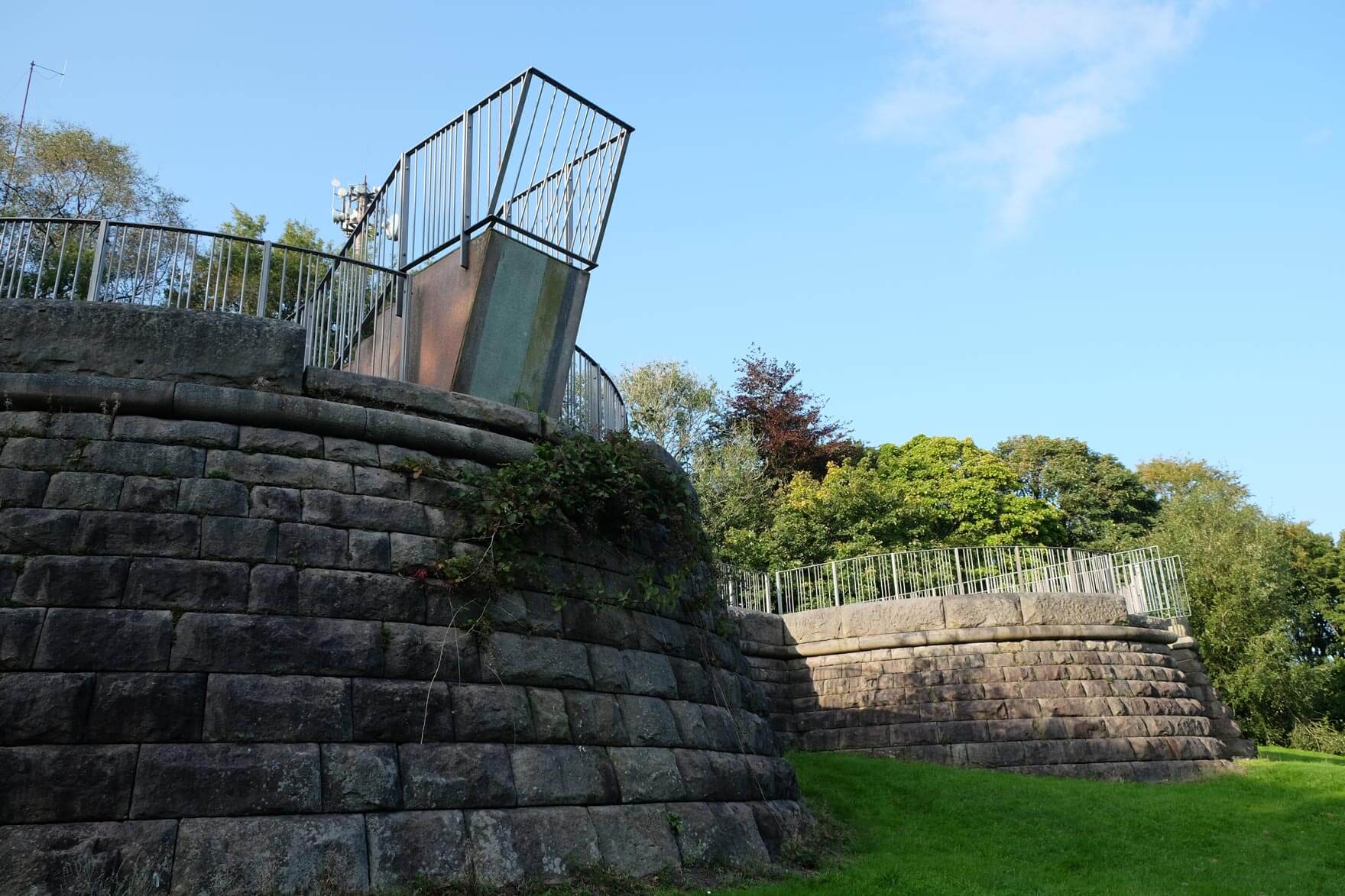
Colourfields was created by artist Sophie Smallhorn and Jo Rippon Architecture and opened in June 2006. The Colourfields Panopticon uses a former cannon battery as its base; originally built for the park’s opening in 1857 to display two Russian cannons captured during the Crimea War, by 2006 the battery had fallen into disrepair and was at risk of being demolished. By creating Colourfields, the cannon battery was saved.
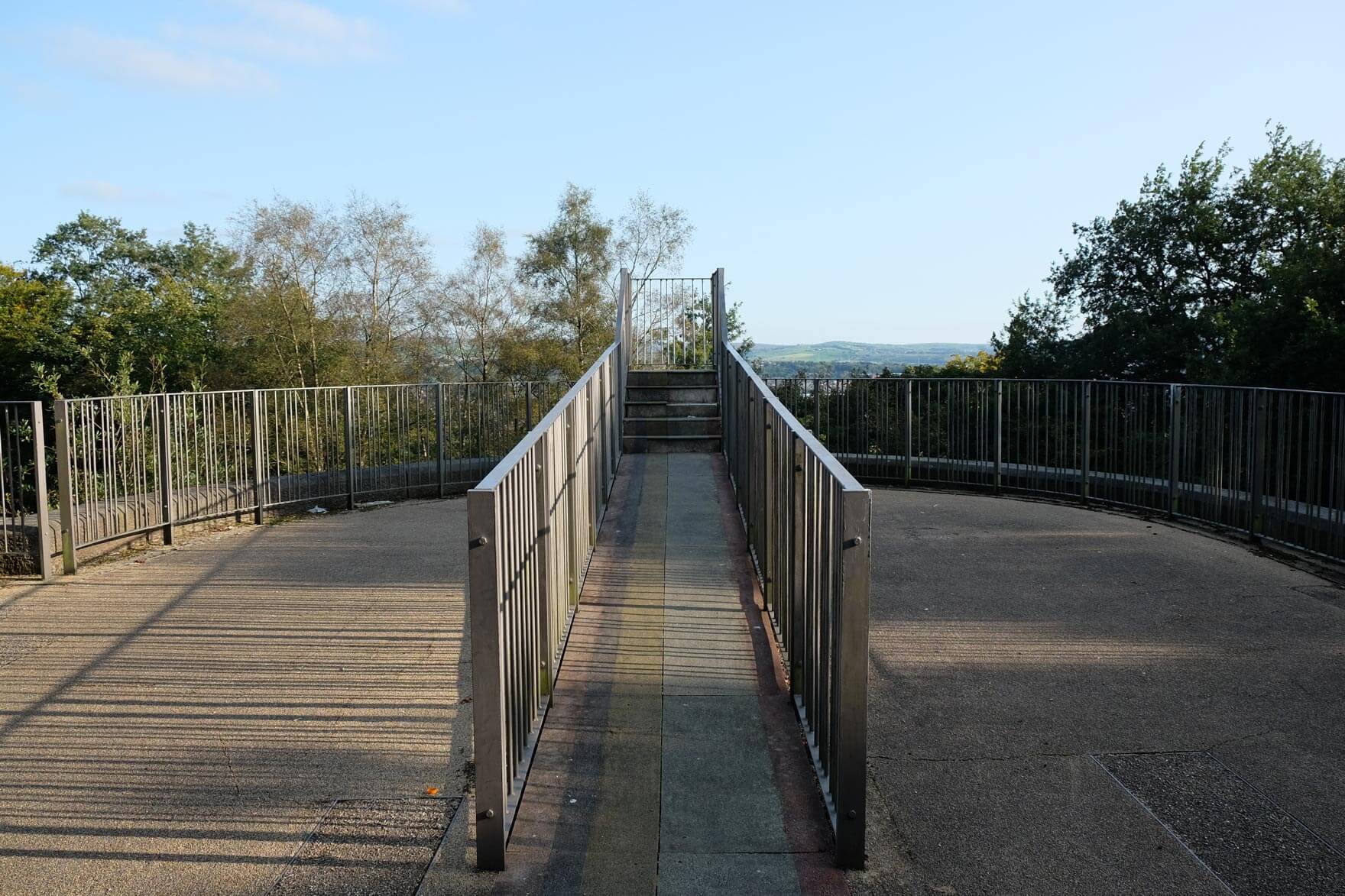
Blackburn’s Panopticon has been in place for over 15 years now, and a lack of maintenance means that it looks rather unloved. The brightly-coloured tiles have faded and some are missing, while the trees in front of the Panopticon have grown, obscuring the view over Blackburn and out towards the Lancashire coast. It’s still an interesting place to visit, and it’s definitely the easiest Lancashire Panopticon to get to.
How to get to the Colourfields Panopticon
It’s very easy to get to the Colourfields Panopticon. On-street parking is available on Revidge Road, although please be considerate of local residents. Blackburn railway station is just over a mile away with services to Manchester and other local towns. Buses run from Blackburn bus station to both ends of Revidge Road, getting you to within half a mile of the Panopticon.
Other attractions nearby
While you’re in Blackburn, don’t miss a visit to Blackburn Cathedral, one of the few cathedrals in the UK to not give its home town the title of city. Blackburn Museum and Art Gallery tells the history of the town and its rich industrial heritage and hosts frequent exhibitions.
Halo Panopticon, Haslingden
The Halo Panopticon stands high above Haslingden and can be seen from miles around, especially at night, when it’s lit up with blue LEDS (although at the time of writing the windmill which powers the lights was out of action). It looks a lot like an alien spacecraft and close up it’s even more impressive, although, like Blackburn’s Panopticon, the area is a little unloved.
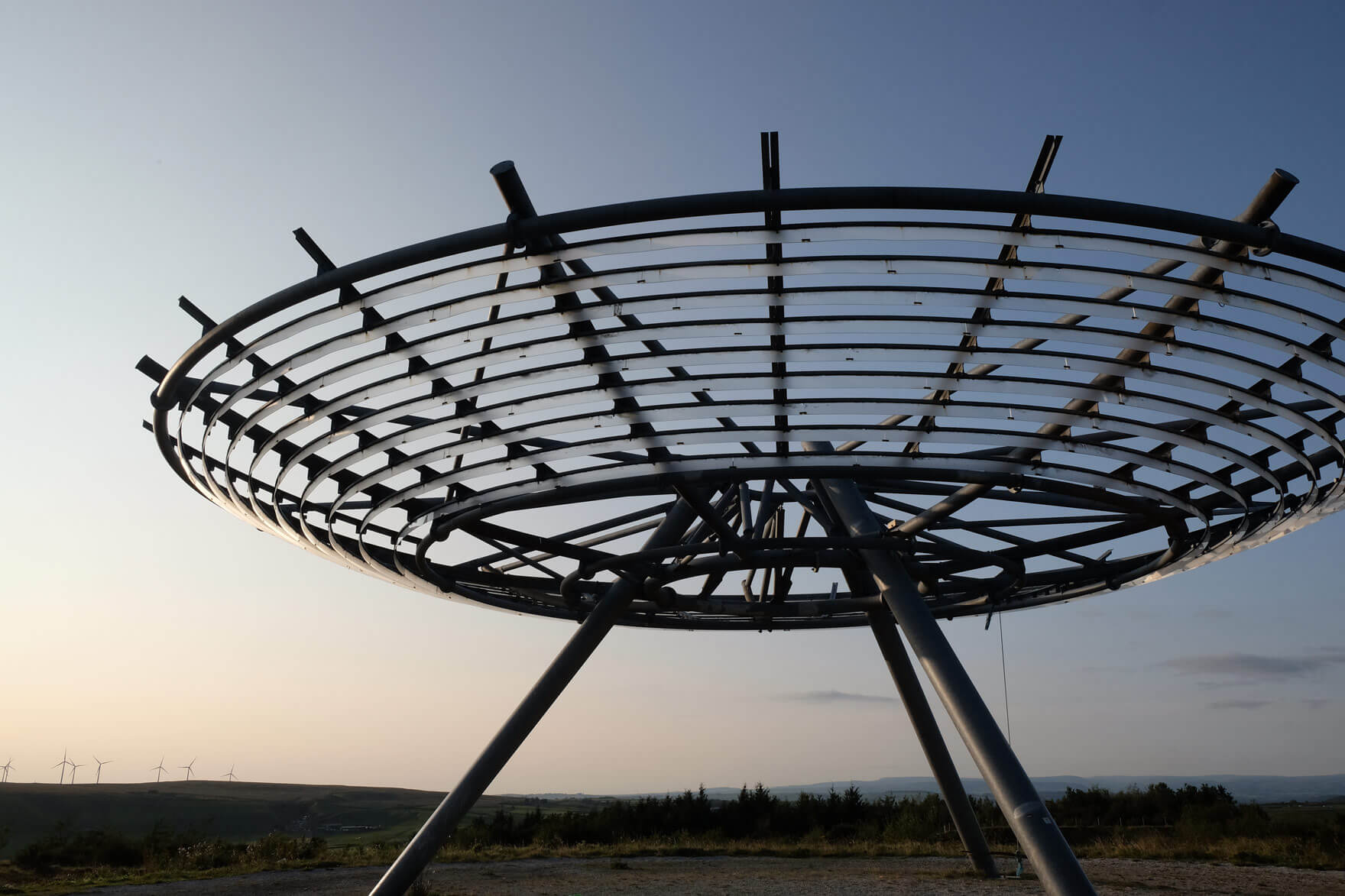
The Halo was the last of the East Lancashire Panopticons to open, in September 2007, and was designed by architect John Kennedy of LandLab. The dish is 18 metres wide and is suspended on three legs five metres above the ground. From the Halo you can see amazing views across Rossendale and beyond, including towards the Peel Tower across the valley.
How to get to the Halo Panopticon
The Halo is just off Cribden End Lane above Haslingden. The roads leading up to the Halo are very narrow, and while there’s a car park at the top it’s very small with space for only four or five cars. At weekends and sunny days it may be best to park at the bottom of the hill and walk up; it’s an interesting walk with great views.
Haslingden is served by buses from neighbouring towns, including Accrington and Blackburn. The bus stops in the town centre are just under a mile from the Halo Panopticon. Please be aware that it is an uphill walk.
Other attractions near the Halo Panopticon
Helmshore Textile Museum is set in two neighbouring 18th-century mills in the village of Helmshore, only 1.5 miles from Haslingden. Guided tours allow visitors to really understand how the mills worked and what life was like for the people who worked there.
The East Lancashire Railway is a heritage railway line that runs from Heywood up to Rawtenstall via Bury and Ramsbottom. Trains are often pulled by steam locomotives and there are special events all through the year, from Santa specials to 1940s-themed weekends. The East Lancashire Railway’s station in Rawtenstall is two miles from Haslingden.

